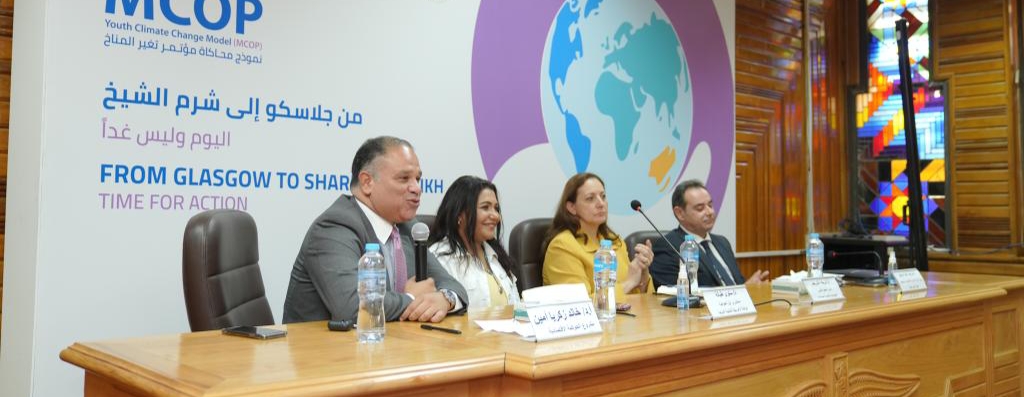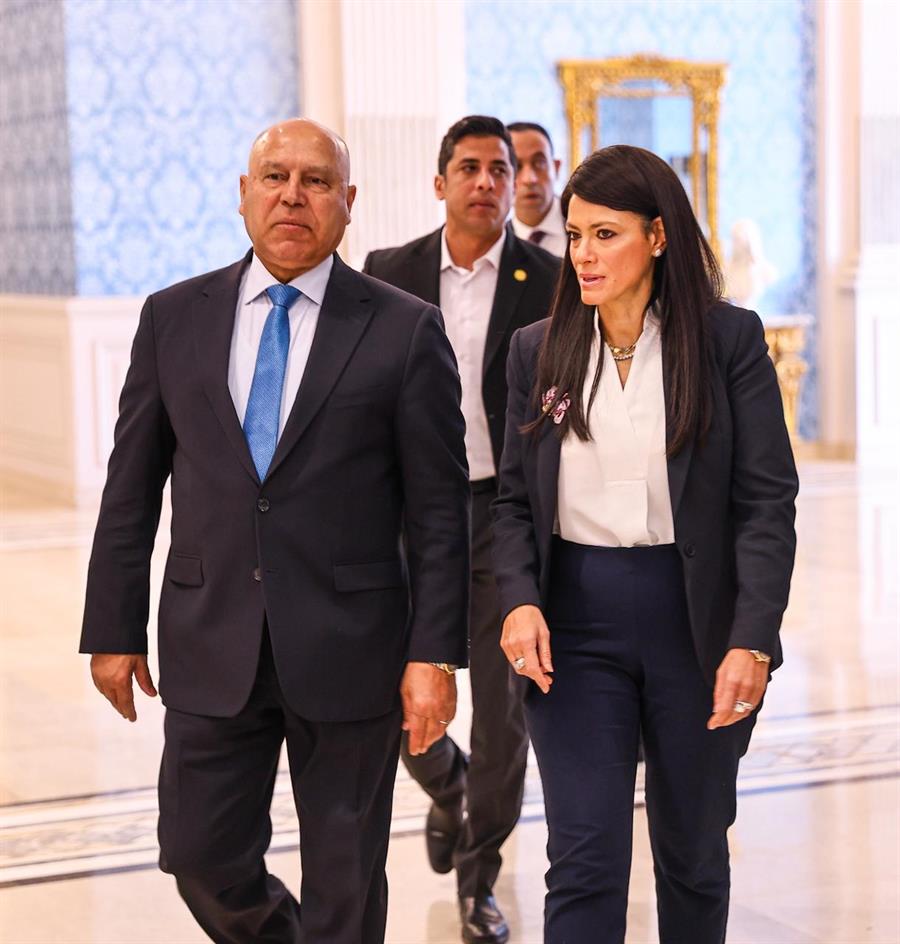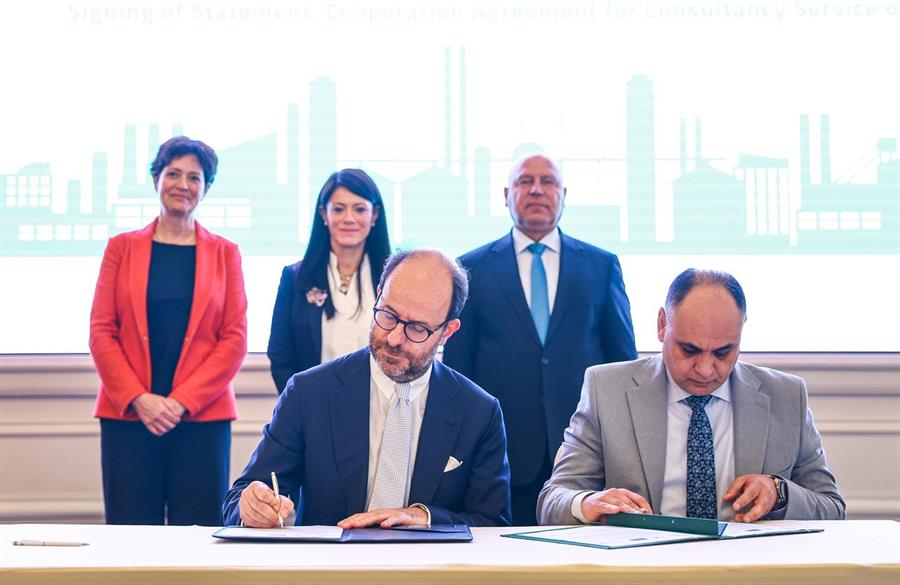NIGSD Participates in the Climate Change Conference Simulation Model (MCOP27)

29 July 2022
Dr. Sherifa Sherif, Executive Director of the National Institute for Governance and Sustainable Development (NIGSD), the training arm of the Ministry of Planning and Economic Development, participated in a dialogue session between Cairo University students participating in the MCOP 27 simulation model and a group of experts and specialists.
The simulation model was held within the framework of implementing activities related to raising youth awareness of climate change issues in preparation for Egypt's hosting of the Conference of the States Parties to the United Nations Framework Convention on Climate Change (COP27) next November.
The organization of the conference simulation model is a joint effort between the United States Agency for International Development (USAID) through the Economic Governance Project, the National Institute for Governance and Sustainable Development (NIGSD), the Ministry of Environment (MOE), Cairo University, and the National Anti-Corruption Academy (EACA).
During the session, Dr. Sherifa emphasized the Egyptian state's interest in educating young people about the importance of the issue of climate change, giving priority to younger generations through implementing various initiatives aimed at raising public awareness about the national goals for sustainable development. Sherifa noted the close issuance of a special booklet on climate change issues and their relationship to the sustainable development goals in a simplified and clearer way for different age groups.Sherifa added that organizing the conference simulation model comes as a joint effort to enhance the role of youth in climate action and raise awareness related to climate change issues.
Sherifa stressed that this strategic cooperation in implementing the simulation model comes within the framework of supporting the implementation of the objectives of the National Climate Change Strategy 2050, which is concerned with promoting scientific research, technology transfer, knowledge management, and raising public awareness about climate action in Egypt.
.At the end of the session, Dr. Sherifa Sherif announced that the door to join the Be an Ambassador initiative was open to all participants in the MCOP 27 simulation model.
The initiative, in which the number of participants exceeded 2,000, seeks to build national capacities in the field of sustainable development through a series of training courses for various groups of people, especially the youth.
The work of the MCOP 27 simulation model will be held over three consecutive months, including holding several training and educational sessions, in addition to providing a package of sessions aimed at refining the various skills of young people.
A group of representatives of ministries and various relevant government agencies, in addition to representatives of the private sector and civil society, participate in the training sessions.
The sessions contribute to raising youth awareness by identifying the most important national efforts in the field of facing the repercussions of climate change, including the objectives of the National Climate Change Strategy 2050, in addition to identifying the importance of partnerships between the public and private sectors and civil society institutions in facing the effects of climate change.
The model also contributes to enriching the student's knowledge about the role of startups in climate action by including several educational sessions on the importance of entrepreneurship and enhancing the role of youth in innovation, in addition to the relationship of artificial intelligence to the issue of climate change.
The model sheds light on a set of intersectional issues related to climate change such as the negative effects of corruption on climate action, and the link between gender issues and climate change.









